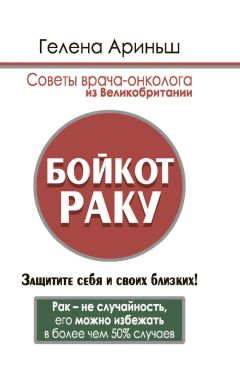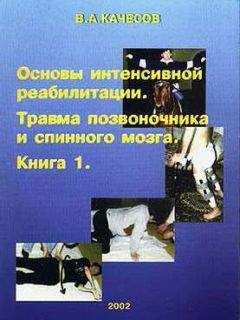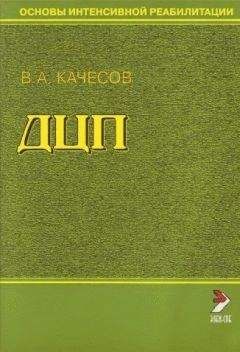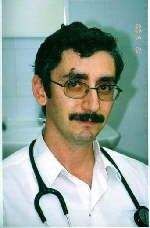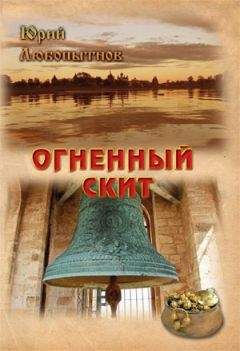57. Steinmetz KA, Potter JD. Vegetables, fruit, and cancer prevention: a review. Am J Diet Assoc 1996; 96: 1027–1039.
58. Fleuschauer AT, Poole C, Arab L. Garlic consumption and cancer prevention: meta-analysis of colorectal and stomach cancer. Am J Clin Nutr 2000; 72: 1047–1052.
59. Fleischauer AT, Arab L. Garlic and cancer: a critical review of the epidemiologic literature. J Nutr 2001; 131: 1032S–1040S.
60. Hsing AW, Chokkalingham AP, Gao YT, Madigan MP, Deng J, Gridley G, Fraumeni JF. Allium vegetables and risk of prostate cancer: a population-based study. J Natl Cancer Inst 2002; 94: 1648–1651.
61. Kim DH, Smith-Warner SA, Spiegelman D et al. Pooled analysis of 13 prospective cohort studies on folate intake and colon cancer. Cancer Causes Control 2010; 21:1919–1930.
62. Strickland KC, Krupenko NI, Krupenko SA. Molecular mechanisms underlying the potentially adverse effects of folate. Clin Chem Lab Med. 2012 Dec; 12: 1–10.
63. Shaidah Deghan Manshadi, Lisa Ishiguro, Kyoung-Jin Sohn, Alan Medline, Richard Renlund, Ruth Croxford, Young-In Kim. Folic Acid Supplementation Promotes Mammary Tumor Progression in a Rat Model. Published: January 21, 2014 DOI: 10.1371/journal.pone.0084635
64. Cravo ML, Mason JB, Dayal Y, Hutchinson M, Smith D, et al. Folate deficiency enhances the development of colonic neoplasia in dimethylhydrazine-treated rats. Cancer Res 1992, 52: 5002–5006.
65. Kim YI, Salomon RN, Graeme-Cook F, Choi SW, Smith DE, et al. Dietary folate protects against the development of macroscopic colonic neoplasia in a dose responsive manner in rats. Gut 1996, 39: 732–740.
66. Lindzon GM, Medline A, Sohn KJ, Depeint F, Croxford R, et al. Effect of folic acid supplementation on the progression of colorectal aberrant crypt foci. Carcinogenesis 2009, 30: 1536–1543.
67. Song J, Medline A, Mason JB, Gallinger S, Kim YI. Effects of dietary folate on intestinal tumorigenesis in the apcMin mouse. Cancer Res 2000, 60: 5434–5440. doi: 10.1016/s0016-5085(00)83190-x.
68. Song J, Sohn KJ, Medline A, Ash C, Gallinger S, et al. Chemopreventive effects of dietary folate on intestinal polyps in Apc+/−Msh2−/− mice. Cancer Res 2000, 60: 3191–3199.
69. Fowke JH, Chung FL, Jin F, Qi D, Conaway C, Cheng JR, Shu XO, Gao YT, Zheng W. Urinary isothiocyanate levels, brassica, and human breast cancer. Cancer Res 2003; 63: 3980–3986.
70. Zhang SM, Hunter DJ, Rosner BA, Giovannucci EL, Colditz GA, Speizer FE, Willett WC. Intakes of fruits, vegetables, and related nutrients and risk of non-Hodgkin`s lypmphoma among women. Cancer Epidemiol Biomarkers Prev 2000; 9: 477–485.
71. Cohen JH, Kristal AR, Stanford JL. Fruit and vegetable intakes and prostate cancer risk. J Natl Cancer Inst 2000; 92: 61–68.
72. Colonel LN, Hankin JH, Whittermore AS, Wu AH, Gallagher RP, Wilkens LR, John EM, Howe GR, Dreon DM, West DM, Paffenbarger RS. Vegetables, fruits, legumes and prostate cancer: a multiethnic case-control study. Cancer Epidemiol Biomarkers Prev 2000; 9:795–804.
73. Duffield – Lillico AJ, Reid ME, Turnbull BW, Combs GF Jr, Slate EH, Fischbach LA, Marshall JA, Clark LC. Baseline characteristics and the effect of selenium supplementation on cancer incidence in a randomized clinical trial: a summary report of the Nutritional Prevention of Cancer Trial. Cancer Epidemiol Biomarkers Prev 2002; 11: 630–639.
74. Clark LC, Combs GF Jr, Turnbull BW, Slate EH, Chalker DK, Chow J, Davis LS, Glover RA, Graham GF, Gross EG, Krongrad A, Lesher JL Jr, Park HK, Sanders BB Jr, Smith CL, Taylor JR. Effects of selenium supplementation for cancer prevention in patients with carcinoma of the skin. A randomized controlled trial. Nutritional Prevention of Cancer Study Group. Jama 1996; 276: 1957–1963.
75. Ghadirian P, Maisonneuve P, Perret C, Kennedy G, Boyle P, Krewski D, Lacroix A. A case-control study of toenail selenium and cancer of the breast, colon, and prostate. Cancer Detect Prev 2000; 24: 305–313.
76. Reid ME, Duffield-Lillico AJ, Garland L, Turnbull BW, Clark LC, Marshall JR. Selenium supplementation and lung cancer incidence: an update of the nutritional prevention of cancer trial. Cancer Epidemiol Biomarkers Prev 2002; 11: 1285–1291.
77. van den Brandt PA, Goldbohm RA, van`t Veer P, Hermus RJ, Sturmans F. A prospective cohort study on selenium status and the risk of lung cancer. Cancer Res 1993; 53: 4860–4865.
78. van den Brandt PA, Goldbohm RA, van`t Veer P, Hermus RJ, Sturmans F. Toenail selenium levels and the risk of breast cancer. Am J Epidemiol 1994; 140: 20–26.
79. Hunter DJ, Morris JS, Stampfer MJ, Colditz GA, Speizer FE, Willett WC. A prospective study of selenium status and breast cancer risk. Jama 1990; 264: 1128–1131.
80. van`t Veer P, van der Wielen RP, Kok FJ, Hermus RJ, Sturmans F. Selenium in diet, blood, and toenails in relation to breast cancer: a case-control study. Am J Epidemiol 1990; 131: 987–994.
81. van Noord PA, Collette HJ, Maas MJ, de Waard F. Selenium levels in nails of premenopausal breast cancer patients assessed prediagnostically in a cohort-nested case-referent study among women screened in the DOM project. Int J Epidemiol 1987; 16: 318–322.
82. Holt PR, Arber N, Halmos B, Forde K, Kissileff H, McGlynn KA, Moss SF, Kurihara N, Fan K, Yang K, Lipkin M. Colonic epithelial cell proliferation decreases with increasing levels of serum 25-hydroxyvitamin D. Cancer Epidemiol Biomarkers Prev 2002; 11: 113–119.
83. Barreto AM, Schwartz GG, Woodruff R, Cramer SD. 25-hydroxyvitamin D3, the prohormone of 1,25-dihydroxyvitamin D3, inhibits the proliferation of primary prostatic epithelial cells. Cancer Epidemiol Biomarkers Prev 2000; 9: 265–270.
84. Schwartz GG, Eads D, Rao A, Cramer SD, Willingham MC, Chen TC, Jamieson DP, Wang I, Burnstein KL, Holick MF, Koumenis C. Pancreatic cancer cells express 25-hidroxyvitamin D-1alpha-hydroxylase and their proliferation is inhibited by the prohormone 25-hydroxyvitamin D3. Carcinoginesis 2004; 25: 1015–1026.
85. Hanchette CL, Schwartz GG. Geographic patterns of prostate cancer mortality. Evidence for a protective effect of ultraviolet radiation. Cancer 1992; 70: 2861–2869.
86. Lefkowitz ES, Garland CF. Sunlight, vitamin D, and ovarian cancer mortality rates in US women. Int J Epidemiol 1994; 23: 1133–1136.
87. Gorham ED, Garland FC, Garland CF. Sunlight and breast cancer incidence in the USSR. Int J Epidemiol 1990; 19: 820–824.
88. Grant WB. Ecologic studies of solar UV-B radiation and cancer mortality rates. Recent Results Cancer Res 2003;164: 371–377.
89. Grant WB. An estimate of premature cancer mortality in the U.S.due to inadequate doses of solar ultraviolet-B radiation. Cancer 2002; 94: 1867–1875.
90. Jenab M, Bueno-de-Mesquita HB, Ferrari P et al. Association between prediagnostic circulating vitamin D concentration and risk of colorectal cancer in European populations: a nested case-control study. BMJ 2010; 340: b5500.
91. Qiao YL, Dawsey SM, Kamangar F et al. Total and cancer mortality after supplementation with vitamins and minerals: follow-up of the Linxian General Population Nutrition Intervention Trial. J Natl Cancer Inst 2009; 101: 507–518.
92. Blot WJ, Li JY, taylor PR et al. Nutrition intervention trials in Linxian, China: supplementation with specific vitamin/ mineral combinations, cancer incidence, and disease-specific mortality in the general population. J Natl cancer Inst 1993; 85: 1483–1492.
93. Medhekar R. The first quantitative evidence providing the efficacy of supplemental enzymes. In Forsyth, MO: National Enzyme Company, Inc 2004.
94. Wald M, Olejar T, Pouckova P, Zadinova M. Proteases reduce metastatic dissemination and increase survival time in C57B16 mice with the Lewis lung carcinoma. Life Sci 1998; 63: L237–243.
95. Wald M, Zavadova E, Pouckova P, Zadinova M, Boubelik M. Polyenzyme preparation Wobe-Mugos inhibits growth of solid tumors and development of experimental metastases in mice. Life Sci 1998; 62: L43–48.
96. Dale PS, Tamhankar CP, George D, Daftary GV. Co-medication with hydrolytic enzymes in radiation therapy of uterine cervix: evidence of the reduction od acute side effects. Cancer Chemother Pharmacol 2001; 47: S29–34.
97. Gujral MS, Patnaik PM, Kaul R, Parikh HK, Conradt C, Tamhankar CP, Daftary GV. Efficacy of hydrolytic enzymes in preventing radiation therapy-induced side effects in patients with head and neck cancers. Cancer Chemother Pharmacol 2001; 47: S23–28.
98. Popiela T, Kulig J, Hanisch J, Bock PR. Influence of a complementary treatment with oral enzymes on patients with colorectal cancers – an epidemiological retrolective cohort study. Cancer Chemother Pharmacol 2001;47: S55–63.
99. Beuth J, Ost B, Pakdaman A, Rethfeldth E, Bock PR, Hanisch J, Schneider B. Impact of complementary oral enzyme application on the postoperative treatment results of breast cancer patients – resultsof an epidemiological multicentre retrolective cohort study. Cancer Chemother Pharmacol 2001; 47: S45–54.
100. Bidoli E, Franceschi S, Talamini R, Barra S, La Vecchia C. Food consumption and cancer of the colon and rectum in northeastern Italy. Int J Cancer 1992; 50: 223–9.
101. Norat T, Lukanova A, Ferrari P, Riboli E. Meat consumption and colorectal cancer risk: dose-response meta-analysis of epidemiological studies. Int J Cancer 2002; 98: 241–56.
102. Terry P, Giovanucci E, Michels KB, Bergkvist L, Hansen H, Holmberg L, et al. Fruit, vegetables, dietary fiber, and risk of colorectal cancer. J Natl Cancer Inst 2001; 93: 525–33.
103. Levi F, Pasche C, Lucchini F, La Vecchia C. Dietary fibre and the risk of colorectal cancer. Eur J Cancer 2001; 37: 2091–6.
104. Bingham SA, Day NE, Luben R, Ferrari P, Slimani N, Norat T, et al. Dietary fiber in food and protection against colorectal cancer in the European Prospective Investigation into Cancer and Nutrition (EPIC); an observational study. Lancet 2003; 361: 1496–501.
105. Aune D, Chan DS, Greenwood DC, et al. Dietary fiber and breast cancer risk: a systemic review and meta-analysis of prospective studies. Ann Oncol 2012; 23: 1394–1402.
106. Ferrari P, Rinaldi S, Jenab M, et al. Dietary fiber intake and risk of hormonal receptor-defined breast cancer in the European Prospective Investigation into Cancer and Nutrition Study. Am J Clin Nutr 2013; 97: 344–353.
107. Jelen P 2005. In: Shortt C, O`Brien J, editors. Handbook of functional dairy products. Boca Raton, Fla: CRC Press.
108. Miller GD, Jarvis JK, McBean LD, 2007. Handbook of dairy foods and nutrition. Boca Raton, Fla: CRC p1.
109. McCann SE, Ip C, Ip MM, McGuire MK, Muti P, Edge SB, Trevisan M, Freudenheim JL. Dietary intake of conjugated linoleic acid and risk of premenopausal and postmenopausal breast cancer, Western New York Exposures and Breast Cancer Study (WEB study). Cancer Epidemiol Biomarkers Prev 2004; 13: 1480–4.
110. Moorman PG, Terry PD. Consumption of dairy products and the risk of breast cancer: a review of the literature. Am J Clin Nutr 2004, 80:5–14.
111. Parodi PW. Dairy product consumption and the risk of breast cancer. J Am Coll Nutr 2005; 24: 556S–68S.
112. Bingham SA, Day N. Commentary: fat and breast cancer: time to re-evaluate both methods and results? Intl J Epidemiol 2006; 35: 1022–4.
113. Cui Y, Rohan TE. Vitamin D, calcium, and breast cancer risk: a review. Cancer Epidemiol Biomarkers Prev 2006; 15: 1427–37.
114. Laakkonen A, Pukkala E. Cancer incidence among Finnish farmers,1995–2005. Scand J Work Environ Health 2008; 34: 73–9.
115. Cho E, Smith-Warner SA, Spiegelman D et al. Dairy foods, calcium, and colorectal cancer: a pooled analysis of 10 cohort studies. J Natl Cancer Inst 2004; 96: 1015–1022.
116. Elwood PC, Givens DI, Beswick AD, Fehily AM, Pickering JE, Gallagher J. The survival advantage of milk and dairy consumption: an overview of evidence from cohort studies of vascular diseases, diabetes and cancer. J Am Coll Nutr 2008; 27: 723S–34S.
117. Park Y, Leitzmann MF, Subar AF, Hollenbeck A, Schatzkin A. Dairy food, calcium, and risk of cancer in the NIH-AARP Diet and Health Study. Arch Intl Med 2009; 169: 391–401.
118. Chan AT, Giovannucci EL. Primary prevention of colorectal cancer. Gastroenterology 2010; 138: 2029–43.
119. Parodi PW. A role for milk proteins and their peptides in cancer prevention. Curr Pharm Des 2007; 24: 556S–65.
120. Goeptar AR, Koeman JH, van Boekel MAJS, Alink GM. Impact of digestion on the antimutagenic activity of the milk protein casein. Nutr Res 1997; 17: 1363–79.
121. Qin L, Xu J, Wang P, Tong J, Hoshi K. Milk consumption is a risk factor for prostate cancer in Western countries: evidence from cohort studies. Asia Pac J Clin Nutr 2007; 16:467–76.
122. Gao X, LaValley MP, Tucker KL. Prospective studies of dairy product and calcium intakes and prostate cancer risk: a meta-anlysis. J Natl Cancer Inst 2005; 97: 1768–77.
